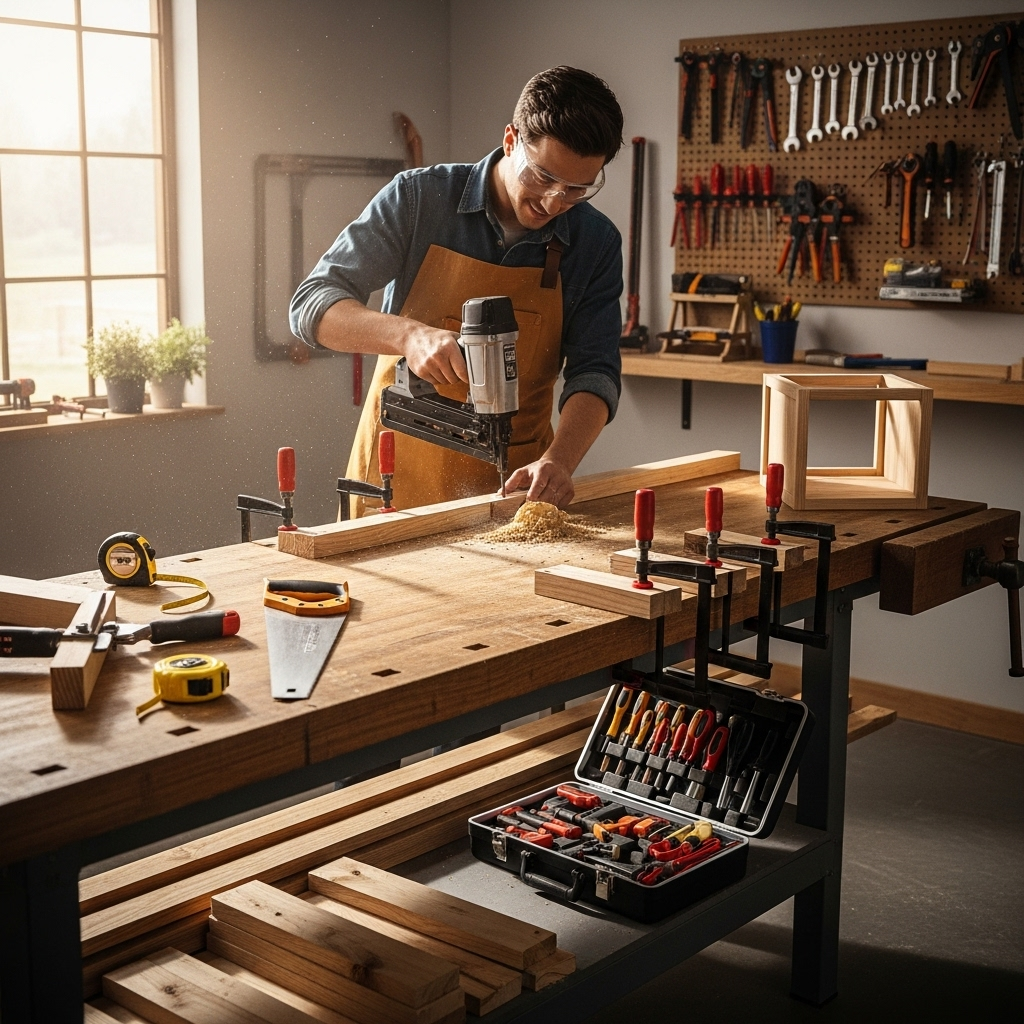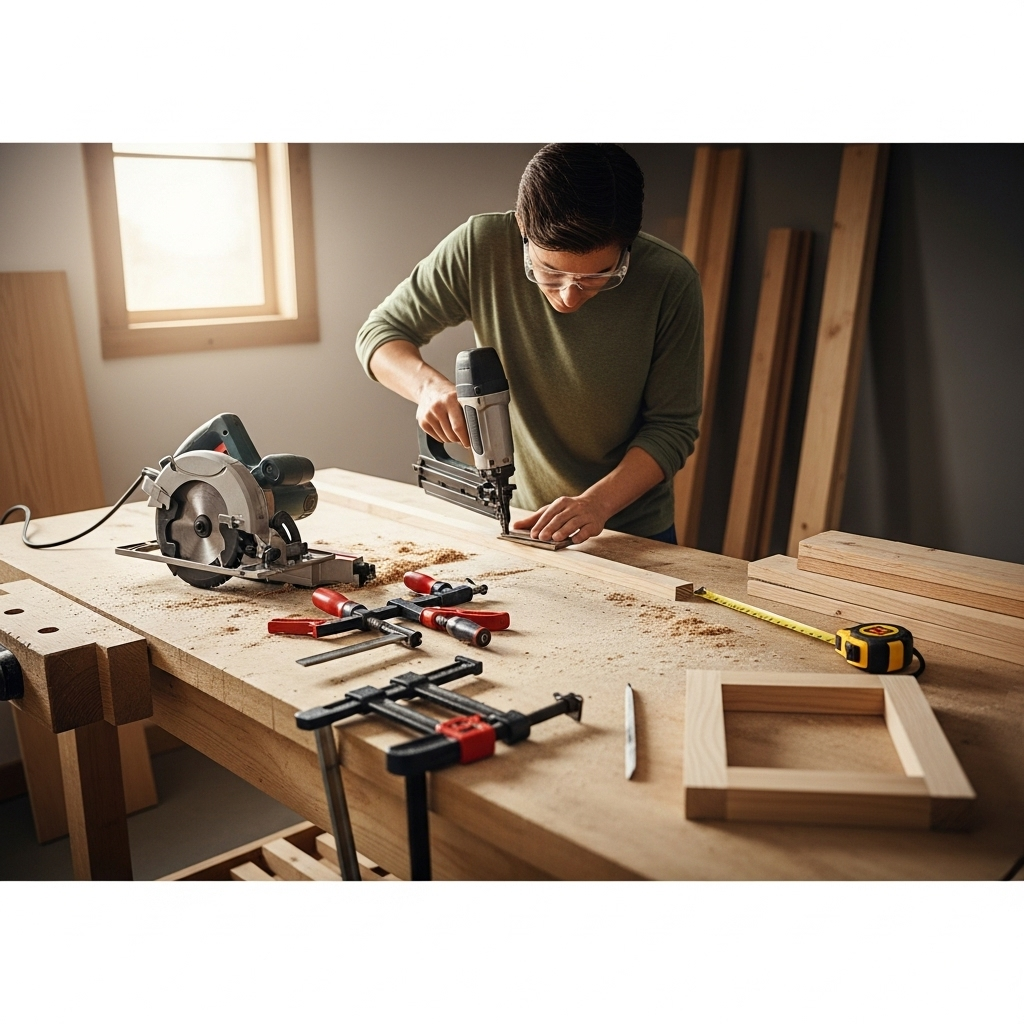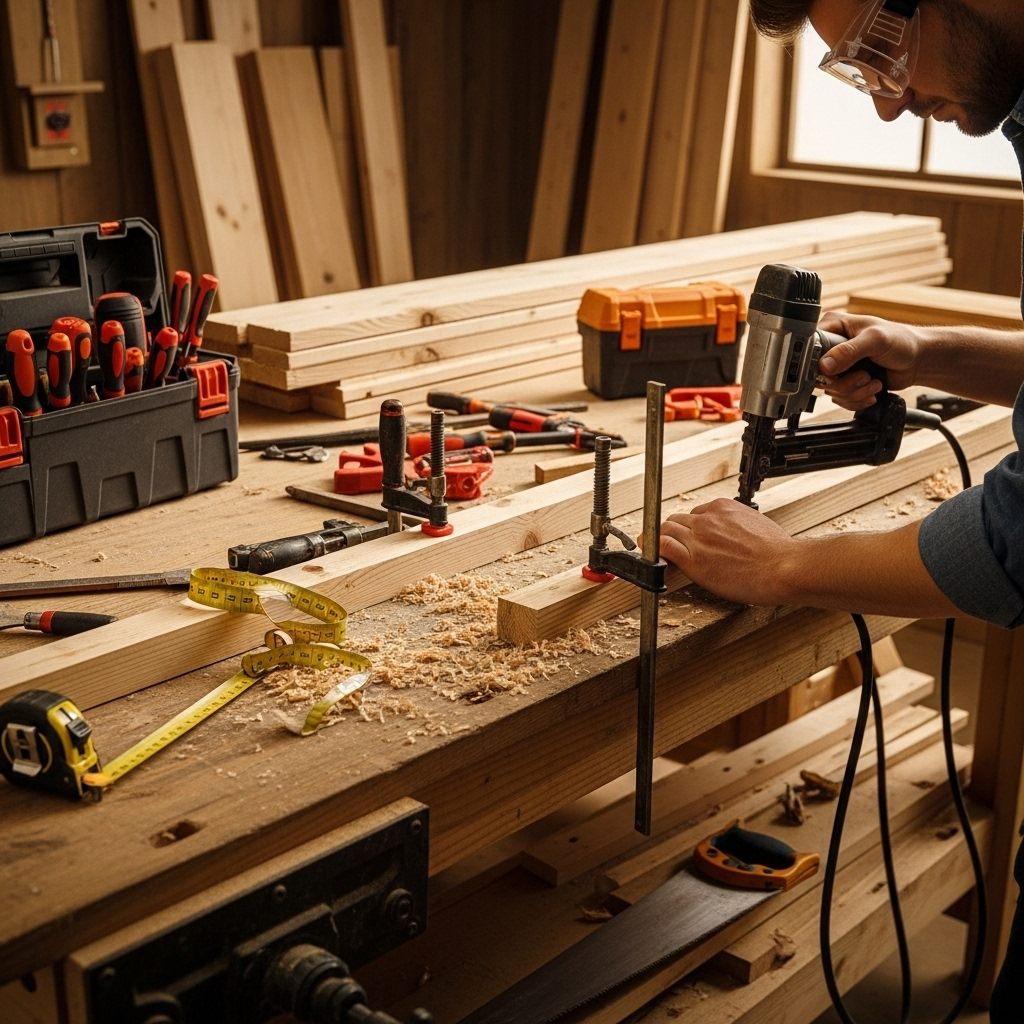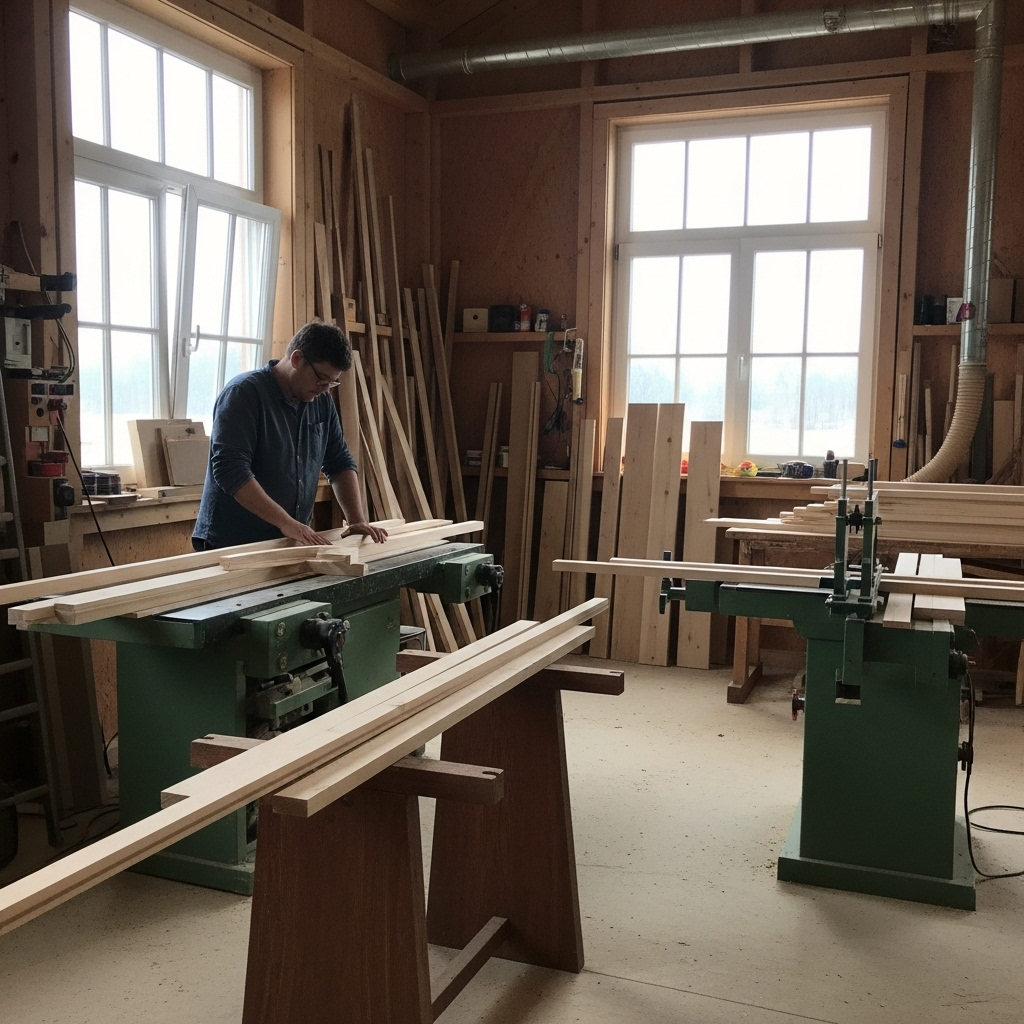Quick Summary: Discover exceptionally cheap and easy birch tree bark crafts! Learn to gather bark safely, prepare it, and transform it into beautiful, natural decorations and functional items with simple tools and techniques. Perfect for budget-friendly, eco-conscious DIYers.
Hey there, DIY enthusiasts and nature lovers! Jack Shaffer here from Nailerguy. Are you looking for a way to add a touch of rustic charm to your home without breaking the bank? Sometimes, the most beautiful decorations come straight from nature, and birch tree bark is a fantastic example!
Many folks think crafting with natural materials is tricky or expensive, but it doesn’t have to be. Birch bark is readily available in many areas, and with a little know-how, you can turn it into stunning pieces that are both unique and budget-friendly. Don’t worry if you’re new to this; I’ll walk you through each step, making it super simple.
We’ll cover everything from safely collecting bark to creating gorgeous items for your home. Get ready to explore the wonderful world of cheap birch tree bark crafts!
Table of Contents
Unlocking Nature’s Canvas: Why Birch Bark is Perfect for Crafts
Birch trees are like nature’s artists, and their bark is a masterpiece of texture, color, and natural patterns. It’s incredibly versatile, making it a top choice for crafters looking for affordable and beautiful materials. Plus, working with it feels good – it connects you to the outdoors and results in truly one-of-a-kind items.
The distinct peeling, papery texture of birch bark, often in shades of white, silver, tan, or even reddish-brown, lends itself beautifully to a wide array of projects. It’s durable enough for repeated handling but pliable enough to shape with ease. This makes it ideal for beginners who want to feel confident in their crafting abilities.
And the best part? You can often gather it for free! This is where the “cheap” in our “cheap birch tree bark crafts” comes in. We’ll focus on sustainable and ethical ways to collect it, ensuring you can continue to enjoy these natural resources for years to come.
Step 1: Ethical & Safe Birch Bark Collection

Before we get to the fun crafting part, it’s crucial to talk about how to collect birch bark responsibly. This ensures we don’t harm the trees and can continue to enjoy their beauty. Remember, healthy trees are key to beautiful bark!
Never peel bark from a living tree in strips wider than a toothpick. Stripping too much bark can injure or even kill the tree. Birch trees have thin bark that is crucial for protecting them from disease, insects, and dehydration. Think of it like their skin!
Here’s how to collect birch bark safely and ethically:
- Look for Fallen Trees: The best and safest source of usable birch bark is from trees that have already fallen. This bark is often already loose and easy to peel.
- Harvest from Naturally Shed Areas: Birch trees naturally shed bark in small pieces. You can often find enough usable bark on the ground around a living tree without causing any harm.
- Small, Superficial Peels: If you must take bark from a living tree, only take small, curled-off pieces from areas that are already damaged or peeling. Never cut into the living layer beneath the outer bark. A good rule of thumb is to only collect what you can get without using any tools to cut or pry.
- Check Local Regulations: Always be aware of and follow local park rules or private property regulations regarding collecting natural materials. Some areas prohibit removal of any items. The USDA Forest Service offers great resources on responsible land use and stewardship.
- Wait for the Right Time: Bark is often easier to peel when the tree is active, usually in late spring or early summer. However, bark from fallen trees can often be collected year-round.
Safety First! When collecting, wear gloves to protect your hands from rough bark and potential splinters. Be mindful of your surroundings, especially if you’re in a wooded area.
Once you’ve collected your bark, you’ll want to clean and prepare it. This step is simple but vital for getting the best results for your crafts.
Step 2: Preparing Your Birch Bark for Crafting
Collected birch bark might be rolled up, a bit dirty, or have loose bits. Taking a few moments to prepare it will make your crafting experience much smoother and your finished projects look polished.
Here’s a straightforward process for getting your bark ready:
- Cleaning: Gently brush off any dirt, moss, or loose debris with a soft brush. For tougher grime, you can wipe it with a slightly damp cloth. Avoid soaking the bark, as too much moisture can make it brittle or cause it to rot.
- Flattening: If your bark is curled, you’ll need to flatten it.
- Weight Method: Lay the bark flat on a clean surface (like a piece of cardboard or a thick newspaper) and place heavy books or flat, smooth stones on top of it. Leave it like this for a few days until it lies flat.
- Ironing (with caution!): For thin, flexible bark, you can try ironing it. Place the bark between two layers of parchment paper on a low heat setting with no steam. Iron gently until it lies flat. Be very careful not to scorch the bark. This method works best for bark that isn’t too thick.
- Trimming: Once flat, you can trim away any rough or uneven edges with sharp scissors or a craft knife. This will give you clean lines for your projects.
- Storage: Store flattened bark in a dry place. Keeping it flat between cardboard sheets and secured with a rubber band or string works well.
Properly prepared bark will be your best friend as you move on to the creative part. It will be easier to cut, glue, and shape, leading to beautiful, professional-looking results.
Essential Tools for Cheap Birch Tree Bark Crafts

The beauty of working with birch bark is that you don’t need a workshop full of fancy tools. Most of what you’ll need can be found around your house or is very inexpensive to acquire. This keeps our “cheap birch tree bark crafts” theme going strong!
Here’s a list of essential tools and supplies:
- Scissors: A good pair of sharp scissors is essential for cutting bark into various shapes and sizes.
- Craft Knife/Utility Knife: For more precise cuts or scoring the bark, a sharp craft knife or utility knife is very handy. Always cut away from yourself on a protected surface.
- Glue:
- White Craft Glue (PVA): Great for general adhesion of bark pieces.
- Hot Glue Gun: Excellent for quick bonding and creating textured embellishments. Use on a low-heat setting for thinner bark to avoid melting.
- Wood Glue: If you’re attaching bark to a wooden base, wood glue provides a strong bond.
- Pencils/Pens: For sketching designs onto the bark before cutting or for writing decorative elements.
- Ruler: For accurate measurements when creating precise shapes.
- Parchment Paper (Optional): Useful for protecting surfaces when ironing or if using very sticky glues.
- Cardboard/Sturdy Paper: For backing or creating structures that will be covered with bark.
- Twine/String/Ribbon: For hanging ornaments, adding decorative ties, or creating rustic finishes.
- Small Paint Brushes (Optional): For applying glue precisely or applying a sealant if desired.
- Clear Sealant (Optional): A spray sealant like Mod Podge or a clear acrylic spray can protect your finished crafts and enhance their natural shine. Test on a scrap piece first.
Knowing what tools you need upfront can save you time and frustration. These simple items will empower you to create a wide range of beautiful birch bark crafts.
Effortless Birch Tree Bark Crafts for Beginners
Now for the fun part! Let’s dive into some easy and rewarding projects that will showcase the natural beauty of birch bark. These are designed to be straightforward, so you can achieve fantastic results even if you’ve never done anything like this before.
1. Simple Birch Bark Ornaments
These are incredibly easy and perfect for holiday decorating or just adding a rustic touch to any room. They also make wonderful, personal gifts.
What You’ll Need:
- Prepared birch bark
- Sharp scissors
- Hole punch
- Twine, ribbon, or string
- Optional: Glue, glitter, markers for decoration
Instructions:
- Cut Shapes: Cut your flattened birch bark into desired shapes – circles, stars, hearts, or simple rectangles.
- Punch a Hole: Use a hole punch to make a neat hole near the top of each ornament for hanging.
- Decorate (Optional): This is where you can get creative!
- Use markers to draw simple designs or write names.
- Add a dab of glue and sprinkle with glitter for a subtle sparkle.
- Layer smaller bark shapes onto larger ones for a 3D effect.
- Tie a small piece of twine to the hole first, then add other decorations.
- Add String: Thread your twine, ribbon, or string through the hole and tie a knot to create a loop for hanging.
Hang these on your Christmas tree, in windows, or on branches for a lovely natural display.
2. Rustic Birch Bark Coasters
Protect your furniture while adding a charming, earthy element to your living space or dining table with these easy coasters.
What You’ll Need:
- Prepared birch bark (preferably with a thicker, more stable texture for coasters)
- Strong scissors or a craft knife
- A round object for tracing (like a glass or small jar)
- Pencil
- Optional: Hot glue gun, thin wood rounds for backing, clear sealant
Instructions:
- Trace Circles: Place your round object onto the bark and trace around it with a pencil. Aim to get 4-6 coasters from a good piece of bark.
- Cut Out Circles: Carefully cut out the traced circles using sharp scissors or a craft knife.
- Level the Surface (Optional): If your bark pieces are uneven, you might want to trim the edges to make them as flat as possible.
- Add a Base (Optional but Recommended for Durability): For extra sturdiness and to protect your table from any potential moisture that might seep through, you can glue the bark circles onto thin wood rounds of the same size. Use wood glue for this.
- Seal (Optional but Recommended): To protect against spills and wear, apply a few coats of a clear spray sealant or outdoor Mod Podge to the top and sides of the coasters. Let each coat dry completely.
These coasters look fantastic and are incredibly functional, proving that cheap birch tree bark crafts can be both stylish and practical.
3. Birch Bark Picture Frames
Give your favorite photos a natural, rustic makeover with these easy-to-create birch bark frames.
What You’ll Need:
- Prepared birch bark
- Cardboard or an old picture frame base
- Scissors or craft knife
- Ruler
- Pencil
- Hot glue gun or strong craft glue
- Optional: Twine for embellishment
Instructions:
- Prepare a Base: You can either use a pre-made frame base (like from a craft store dollar bin) or create your own. For a DIY base, cut a sturdy piece of cardboard into the desired frame shape. Make sure to cut out a central opening for your photo. Alternatively, cut a solid piece of cardboard for a more rustic, border-only look.
- Measure and Cut Bark Strips: Measure the sides of your frame base. Cut strips of birch bark that are slightly wider than the base frame. You don’t need super precise measurements here; a rustic look is part of the charm!
- Glue Bark onto Base: Starting with one side, apply glue to the cardboard frame base and carefully press a bark strip onto it. Overlap the edges slightly for a seamless look if possible. Continue this process for all sides of the frame.
- Cover the Edges: For a clean finish, you can wrap the bark strips slightly around the edges of the cardboard, or cut small pieces of bark to cover any exposed cardboard edges.
- Add Details (Optional): Once the bark is adhered, you can add extra embellishments. Wrap twine around the frame, glue small pieces of bark in interesting patterns, or leave it as is.
- Insert Photo: Once the glue is dry, you can insert your photo. If you made a cardboard base with an opening, you can tape your photo to the back.
These frames add so much warmth and character to any photo display. They’re a perfect example of how simple materials can create impactful art.
4. Birch Bark Candle Holders/Vases
Add a cozy, natural glow to your home by wrapping plain jars or cans with beautiful birch bark. This is a wonderfully simple project that has a big impact.
What You’ll Need:
- Clean glass jars or tin cans (various sizes work well)
- Prepared birch bark
- Scissors or craft knife
- Hot glue gun (preferred for quick adhesion) or strong craft glue
- Optional: Twine, dried flowers, small embellishments
Instructions:
- Measure Bark: Measure the height of your jar or can. Then, wrap a strip of birch bark around the circumference of the jar/can to determine the required length. Cut the bark strip to size, allowing for a slight overlap.
- Glue Bark onto Vessel: Apply a line of hot glue (or craft glue) along the edge of the jar/can where the bark will start. Press the edge of the bark strip firmly onto the glue.
- Continue Wrapping: Apply glue as you go, working your way around the jar/can, pressing the bark firmly onto the surface until you reach the starting point. Overlap the ends of the bark strip by about half an inch and glue them down securely.
- Trim Edges (if needed): Ensure the top and bottom edges of the bark are neat. Trim any excess bark if necessary.
- Decorate (Optional): For a more rustic look, tie twine or ribbon around the neck of the jar or around the middle. You can also glue on small dried flowers or leave the bark as is.
- Use Safely:
- For Candles: Use with caution! If using for candles, ensure the flame is never close to the bark. A good practice is to place a layer of sand or small stones at the bottom of the jar, then place your candle on top. Never leave a burning candle unattended. Ensure good ventilation.
- For Vases: You can place small, clean glass containers or plastic cups inside the bark-covered vessel to hold water for flowers. This prevents direct contact between water and bark.
These candle holders and vases bring an instant piece of the forest into your home. They’re a testament to how inexpensive materials can create such cozy ambiance.
Table: Pros & Cons of Working with Birch Bark

Like any crafting material, birch bark has its advantages and disadvantages. Understanding these will help you choose the right projects and manage your expectations.
| Pros | Cons |
|---|---|
| Affordable/Free: Often obtainable from fallen trees or naturally shed pieces, making these some of the cheapest crafts around. | Availability: May not be readily available in all geographic locations, especially in urban areas or regions without birch trees. |
| Natural Beauty: Unique patterns, textures, and colors offer a beautiful, rustic aesthetic. | Brittleness: Can become brittle if old or dried out improperly, leading to cracking or crumbling. |
| Versatility: Can be cut, shaped, layered, and glued for a wide range of projects. | Durability Concerns: While somewhat durable, it’s not as hardy as wood or plastic and can be prone to damage if not handled or sealed properly. |
| Eco-Friendly: Utilizes a natural, renewable resource, especially when collected responsibly. |
